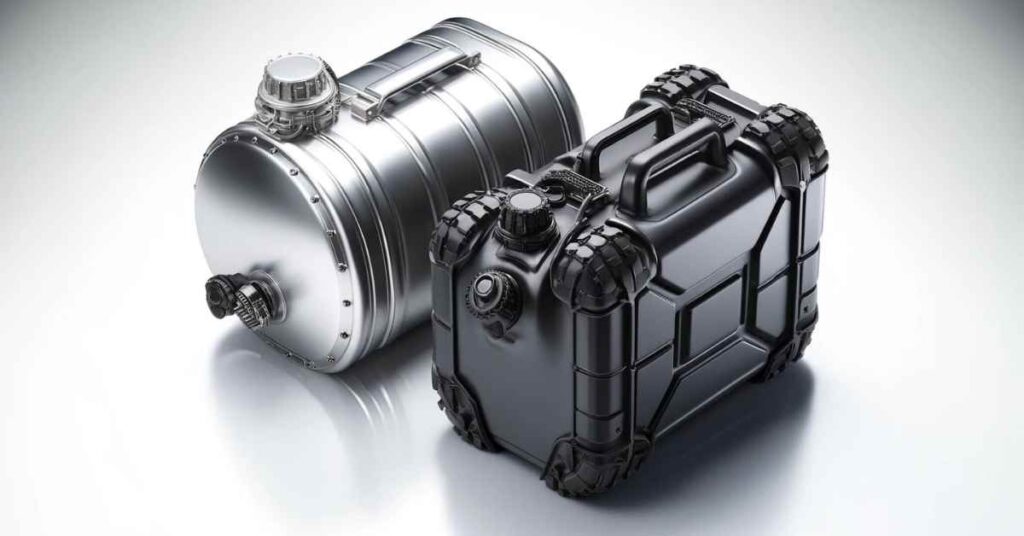Introduction to Auxiliary Fuel Tanks
Auxiliary fuel tanks are additional fuel storage systems designed to supplement the primary fuel tank of a vehicle. Often used in trucks, commercial vehicles, and long-haul transportation, these tanks increase the fuel capacity, enabling longer distances without the need for frequent stops to refuel. They not only enhance operational efficiency but also improve convenience for drivers who traverse remote areas where fuel stations are sparse.
The primary benefits of auxiliary fuel tanks are their ability to extend travel range and reduce downtime during trips. For businesses, this can translate into significant cost savings and improved logistics. Additionally, for leisure travelers in RVs or those who enjoy remote camping, these tanks provide peace of mind, knowing they have ample fuel for their adventures.
Types of Auxiliary Fuel Tanks
Aluminum Tanks
Aluminum auxiliary fuel tanks are popular due to their lightweight nature and resistance to corrosion. They are particularly favored in environments where weight reduction is crucial for fuel efficiency and where corrosion could be a significant issue, like in salty environments.
Steel Tanks
Steel tanks are known for their durability and strength, making them ideal for rugged applications. However, they are heavier than aluminum and can be prone to rust if not properly maintained, especially under harsh conditions.
Polyethylene Tanks
Polyethylene tanks are extremely versatile and resistant to both denting and corrosion. They are the lightest of the options and are increasingly chosen for their adaptability and cost-effectiveness, though they might not be as durable under extreme physical conditions as metal tanks.
The choice of material depends on various factors, including the vehicle’s capacity, intended use, and environmental conditions. Each material offers distinct advantages and potential drawbacks.

Installation of Auxiliary Fuel Tanks
Pre-Installation Considerations
Before installing an auxiliary fuel tank, it’s essential to consider the compatibility with the vehicle and the specific safety requirements needed. This involves understanding the vehicle’s load capacity and ensuring the tank’s design meets regulatory safety standards to avoid hazards.
Step-by-Step Installation Guide
Installing an auxiliary fuel tank typically requires several tools and a clear understanding of the vehicle’s fuel system. The process generally involves mounting the tank securely, connecting fuel lines, and ensuring all connections are sealed to prevent leaks.
While many vehicle owners opt for professional installation to ensure safety and compliance, DIY installations can be done with careful planning and adherence to instructions.
Regulations and Legal Aspects
Federal Regulations
Navigating the regulations governing auxiliary fuel tanks is crucial for legal compliance and safety. In the United States, the Department of Transportation (DOT) outlines specific standards that must be met. These regulations ensure that the tanks are safely constructed, installed, and maintained. It’s important for vehicle owners to familiarize themselves with DOT requirements to avoid penalties and ensure safe operation.
State Specific Laws
Beyond federal regulations, each state may have its own set of rules concerning auxiliary fuel tanks. These can vary widely, so it’s essential for vehicle owners to check with local transportation authorities to get accurate and relevant information. This step is particularly important when traveling across state lines.
Ensuring compliance not only helps in avoiding legal issues but also safeguards the vehicle’s operation and the safety of its occupants.
Maintenance and Safety
Routine Checks and Maintenance
To ensure the longevity and proper functioning of auxiliary fuel tanks, routine maintenance is necessary. This includes regular inspections for any signs of wear, leaks, or damage. Vehicle owners should check connections and seals regularly and look for any signs of corrosion or physical damage to the tank itself.
Safety Tips
Handling auxiliary fuel tanks requires caution, given the flammable nature of the contents. Always ensure that the tank is properly grounded when refueling to prevent static-induced fires. In case of a leak, it’s crucial to address it immediately to prevent any risk of fire or environmental contamination.
Having an emergency plan and the necessary safety equipment, like fire extinguishers and spill kits, is also vital for handling unforeseen incidents.
Advantages of Auxiliary Fuel Tanks
The installation of an auxiliary fuel tank brings several advantages. The most significant is the increased fuel capacity, which allows for extended range without frequent stops to refuel. This is particularly beneficial for commercial vehicles that operate over long distances, as it reduces downtime and can lead to more efficient route planning.
Moreover, for recreational users like RV owners, auxiliary fuel tanks provide the ability to explore remote areas without the worry of running out of fuel. This enhances the travel experience by allowing for more spontaneous and extensive exploration.
Cost benefits over time are also notable, as auxiliary tanks offer the opportunity to refuel when prices are favorable, potentially leading to significant savings.
Potential Issues and Troubleshooting
Common Issues with Auxiliary Fuel Tanks
Despite their benefits, auxiliary fuel tanks can face issues such as leaks and corrosion. Leaks are particularly dangerous as they pose fire risks and environmental hazards. Corrosion can compromise the tank’s integrity, leading to potential failures.
Troubleshooting Tips
Regular inspections can help identify problems early. If a leak or corrosion is detected, it’s crucial to address it immediately. For complex issues, consulting with a professional or the manufacturer is advisable to ensure that repairs are properly executed.
Choosing the Right Auxiliary Fuel Tank
When selecting an auxiliary fuel tank, several factors need to be considered. These include the type of fuel used, the size and weight capacity of the vehicle, and the specific needs of the user. It’s also important to consider the quality of construction and the reputation of the manufacturer.
Best practices in selection ensure that the tank will provide the desired performance and reliability without compromising safety.
Future Trends and Innovations
The future of auxiliary fuel tanks is likely to be influenced by technological advancements and environmental considerations. Innovations may include improved materials for lighter, more durable tanks and designs that optimize fuel efficiency. Additionally, as sustainability becomes more critical, we may see a rise in auxiliary tanks designed for alternative fuels like biodiesel and hydrogen.
Conclusion
Auxiliary fuel tanks are a valuable addition for many vehicle owners, offering extended range and flexibility. Whether for commercial use or personal convenience, these tanks provide significant benefits but require careful consideration of type, installation, maintenance, and compliance with legal standards. By staying informed and proactive, users can maximize the advantages while ensuring safety and efficiency.
FAQs
- What is the primary benefit of installing an auxiliary fuel tank?
- The primary benefit is increased fuel capacity, which extends the vehicle’s range and reduces the need to refuel frequently.
- Are auxiliary fuel tanks safe to use?
- Yes, when installed and maintained correctly, auxiliary fuel tanks are safe. However, adherence to safety guidelines and regulations is crucial.
- Can I install an auxiliary fuel tank on any vehicle?
- While many vehicles can accommodate an auxiliary fuel tank, it’s essential to verify compatibility and legal regulations based on the vehicle type and intended use.
- How often should an auxiliary fuel tank be inspected?
- It’s recommended to inspect the tank at least annually, though more frequent checks may be necessary depending on usage and environmental conditions.
- What should I do if I find a leak in my auxiliary fuel tank?
- If a leak is detected, stop using the tank immediately and repair it using appropriate tools and guidelines, or consult a professional.

